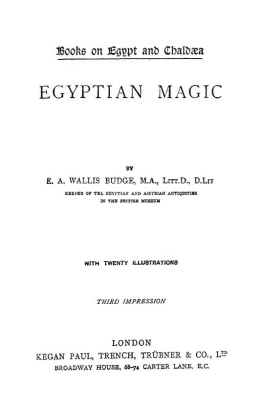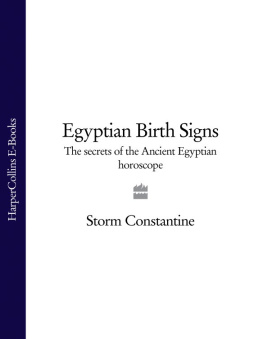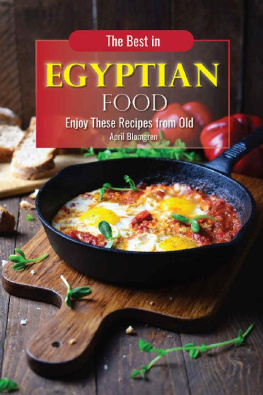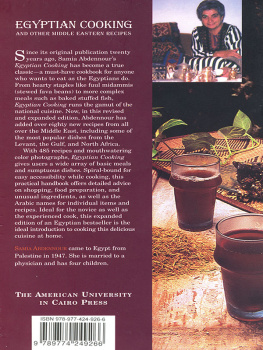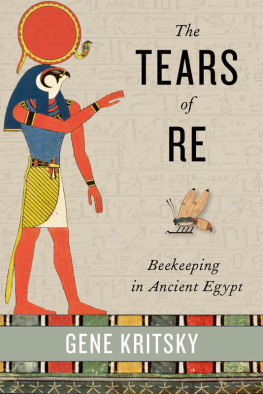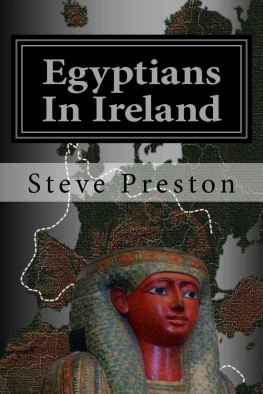Egyptian Customs and Festivals
Egyptian Customs and Festivals
Samia Abdennour
First published in 2007 by
The American University in Cairo Press
113 Kasr el Aini, Cairo, Egypt
420 Fifth Avenue, New York, NY 10018
www.aucpress.com
Copyright 2007 by Samia Abdennour
All rights reserved. No part of this publication may be reproduced, stored in a retrieval system
or transmitted in any form or by any means, electronic, mechanical, photocopying, recording
or otherwise, without the prior written permission of the publisher.
Dar el Kutub No. 15642/06
ISBN 978 977 416 060 8
1 2 3 4 5 6 12 11 10 09 08 07
Designed by Sarah Rifky
Printed in Egypt
To Hana and Neda
with all my love
Acknowledgments
I WISH TO express my thanks to Dr. Zeinab Shoosha and Dr. Mahmood Khayal for providing me with valuable information about Islamic traditions.
I am also indebted to Lily Hanna and Dr. Camelia Zaki for their help with Coptic customs.
Last but not least, I wish to thank my husband, Dr. Samir Hanna Sadek, and my daughter, Dr. Soha S. Athanasios, for their critical review of this book and their most valuable additions and suggestions.
Preface
WHAT PROMPTED ME to write this book was an incident involving a western acquaintance of mine. While she meant well, her actions were considered extremely inappropriate by Egyptian standards.
This person heard that her colleagues husband had passed away. Feeling quite upset, she immediately left the office to go and console her friend. Hurrying into the home of the bereaved, she greeted all those present with a loud Hi! and in a throbbing voice asked, What happened? I never knew he was sick, and so on. Her outburst, loud greeting, and dress were all met, to say the least, with a frown by the family and mourners.
So I decided to write the present book to give the western reader a brief description of the Egyptian way of life, customs, and traditions.
Most of the customs described in this book apply to the middle-and upper-middle classes living in the capital and the big cities. The first part of the book deals with a general idea of the mode of life and society, and includes a short summary of etiquette appropriate to various circumstances. The second part deals with religious and non-religious rites and festivities. The last part is a list of common proverbs and sayings, ending with a list of recipes for some of the foods mentioned in the book.
I hope this small book will help newcomers to Egypt to appreciate its culture and avoid any unintended faux pas on their part. I also hope it will help the children of Egyptian emigrants to the west to understand those aspects of their parents behavior and ways of thinking that are alien to their acquired culture.
Introduction
LOOKING AT THE monuments and engravings of the ancient Egyptians, one cannot help noticing how much of the world of the pharaohs is still reflected in present-day life in Egypt. Egyptians are very conservative in their mode of life, and are keen to preserve old rites. Many of the present-day rituals are borrowed from the age-old customs and traditions of the ancient Egyptians. These traditions give modern Egyptians a sense of stability and a feeling of continuity, and for Egyptians who pride themselves on their recorded history of five thousand years, these traditions certainly perpetuate their sense of serenity and security.
The festivities depicted on the monuments show a great similarity to those enjoyed nowadays, whether national or religious, in the merry-making, banquets, dancing, and offering of presents. Although language and religious beliefs have changed radically, the rites bear the imprint of the old pageants. Even the foodvegetables, poultry, fish, or gameis mostly the same as those depicted in tomb and temple decorations.
For many Egyptians life is a daily quest for basic needs, made tolerable because they are comforted by an extended family, consoled by religion, and kept smiling by an irrepressible sense of humor. Egyptians are famous for their jokes and earthy wit. They are friendly, modest, and helpful. They will go out of their way to help foreigners to find their way or invite them for a meal or a glass of tea. Their offers are usually authentic and not proffered in expectation of reward. This generosity is part of their culture and a product of the harsh living conditions, which foster values of sharing and giving.
Egyptians are normally a happy, cheerful people, turning various moments of their lives into song: whether of love, hate, joy, suffering, or desire. Each province has its own poets, songs, dancers, and professional musicians, and Goha, with his cunning and preposterous naivet, remains the chief buffoon of Egyptian folklore. For many ordinary Egyptians, unsolved problems are usually taken care of with the expression Khalliha ala Allah (Leave it to God). Another shock absorber is Malish (Dont worry, or Its all right), an essential word in everyones vocabulary.
Religion plays an essential role in the life of all Egyptians, and is often at the root of their behavior, dress, food, conversation, and dealings. In all social aspects there is no great distinction between Muslims and Copts: the social code is the same except for religious occasions. But religious education is compulsory in all state schools, and the institutions of both faiths work hard to maintain their standing. Both al-Azhar (the oldest Islamic university and an important arbiter of Sunni orthodoxy) and some churches run an entire education system parallel to the state primary and secondary schools. Religious organizations also run clinics and hospitals, as well as sports clubs and other social venues.
Family ties are strong in Egypt, and it is almost unheard of for adult family members to go for months without meeting or visiting each other. Unmarried children live with their parents, irrespective of age. Not only is the cradle-to-grave bond inescapable, it is also inconceivable for Egyptians to live otherwise.
Although a drift into cities and population growth have somewhat altered the sense of community, Egyptians remain extremely family-oriented. Society bestows great reverence on its elders, who are viewed as a baraka (blessing), to whom respect and love are due. Respect for elders takes many forms, especially when it comes to body language. In many families, an adult will not sit cross-legged or smoke in front of his or her elders, as both these habits are considered disrespectful. Contradicting an elders view or raising ones voice in his or her presence is also considered disrespectful. It is not uncommon for an adult to kiss the hand of his or her parents or grandparents as a sign of love and respect. The most common maxims quoted in this respect are


